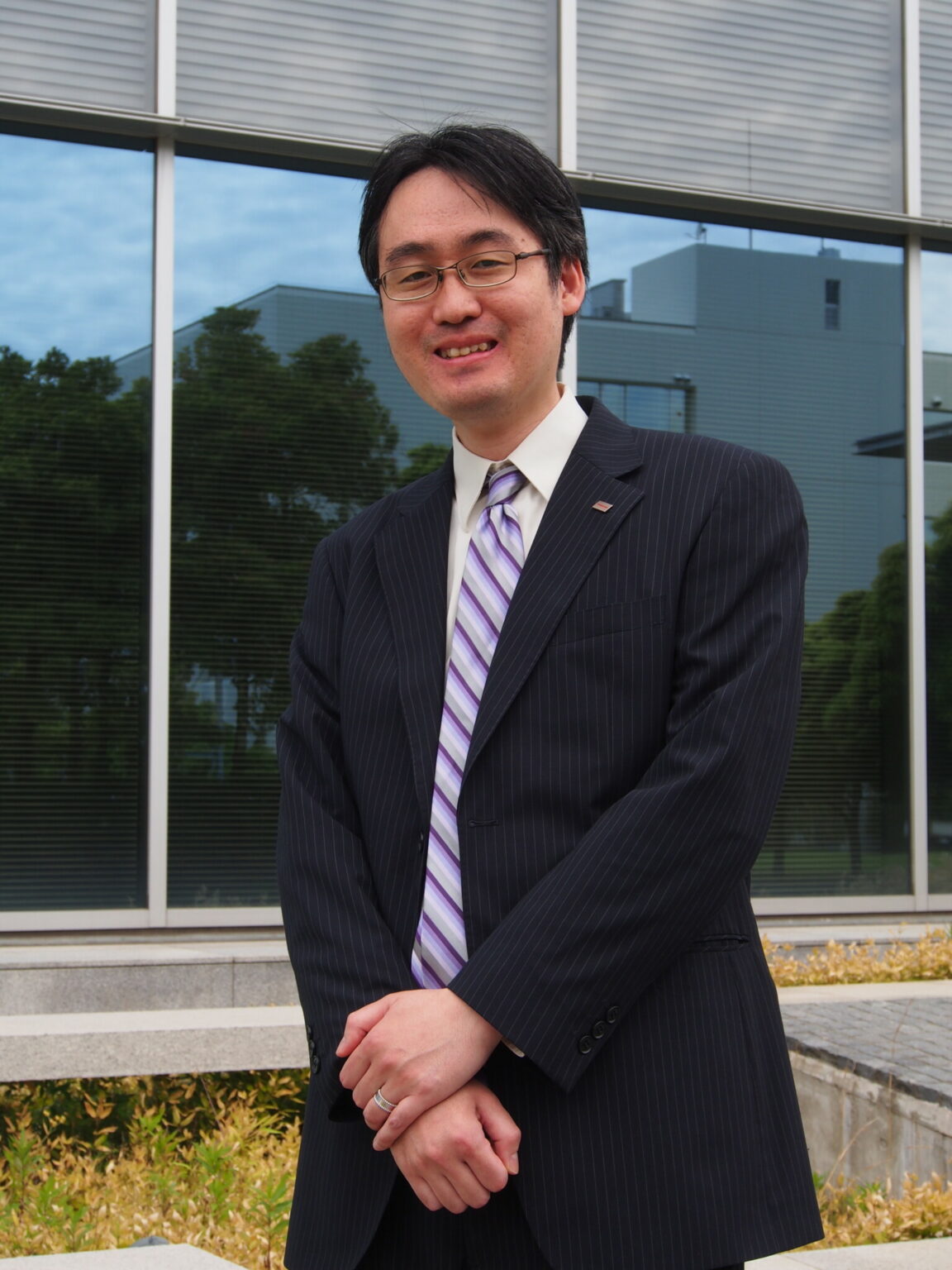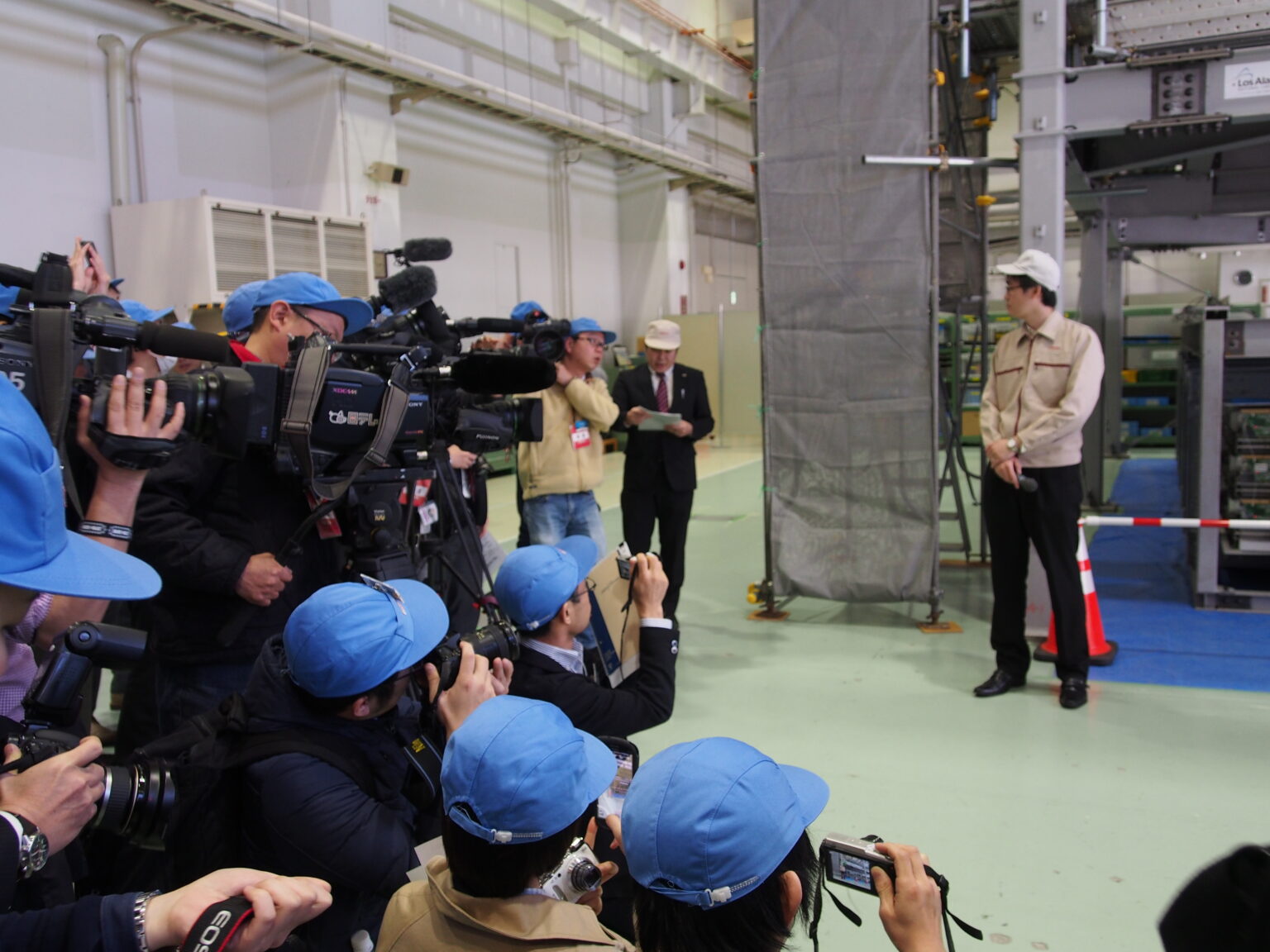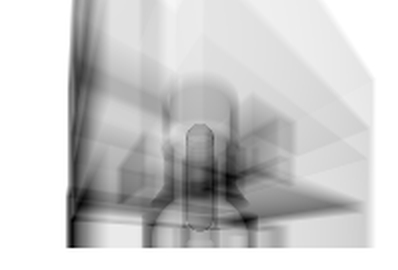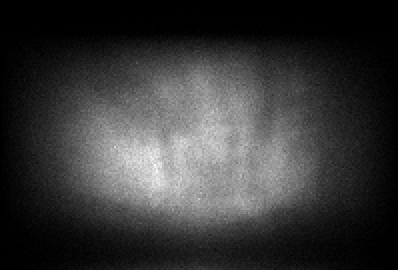The most important cosmic particle you’ve never heard of
(Erschienen in: No. 1 Shimbun (FCCJ) , December 2015)
The image is blurry, underexposed and out of focus: One cannot make out much more than a long object rising up out of the semi-darkness. What appears to be just an amateur photographer’s snapshot taken at night under difficult lighting circumstances, however, actually took one month to create – and the technology behind it is the result of years of intensive research and a massive amount of investment. What the image shows is something that no one will be able to see with the naked eye for a very long time: the inside of the damaged reactors of the Fukushima Daiichi Nuclear Power Plant.
Since the March 11, 2011 earthquake and tsunami knocked out the power supply and led to multiple core meltdowns in the plant, thousands of workers have been struggling nonstop to bring the situation under control. Large amounts of radiation have been released into the environment, and parts of the plant are so highly contaminated that workers can only work there for a couple of minutes without risking radiation sickness or death. One of the biggest hurdles in decommissioning the damaged plant is that no one knows exactly where the molten fuel rods are. Some could be at the bottom of the reactor vessel. Others might have fallen into the containment vessel. But Dr. Haruo Miyadera, a young Japanese scientist working in the U.S., realized that locating the fuel would accelerate the clean-up process considerably. So just one week after the disaster he boarded a plane home with an idea of how to do just that.
At the time of the triple disaster the 38-year-old Miyadera had been part of a group of researchers at the renowned Los Alamos Nuclear Laboratory (LANL) in New Mexico. The team was developing detectors using cosmic particles called muons for imaging techniques, under their leader, Dr. Christopher Morris. Morris is one of the pioneers in muon research, which has changed quite a bit since the discovery of the particles in the mid-20th century. Muon tomography is used in situations where conventional techniques like Roentgen X-rays cannot be used – such as when the object is too big or may not be manipulated. The applications are extremely diverse. These elusive cosmic particles have been used to search for secret chambers in the famous Egyptian pyramids of Giza and to “see” magma bubbles in active volcanoes in Japan.

And to search for nuclear weapons at major U.S. ports. “After 9/11, people became worried about terrorism,” the 68-year old Morris says. “Imagine someone wanted to smuggle nuclear weapons in a cargo container filled with frozen peas. Due to the aerial mass it would be impossible to produce an X-ray of the container.” Muons were the solution. Since all that can be done without handling or manipulating the object being scanned, Miyadera wondered whether the technique could be used to detect molten fuel in a damaged nuclear reactor. “Lots of people were speculating. We thought that the planning must be done based on real data, not just speculation,” Miyadera says.
MUONS ARE “BORN” 10 kilometers above the earth, where cosmic rays, mainly protons, react with the atomic nuclei in the atmosphere. They are similar to electrons, but 200 times more massive. They look like a dot and do not have an inner structure. But since muons are electrically charged, they are easy to detect. Every minute, 10,000 muons pound each square meter of the earth at slightly under light speed. They shoot through human tissue as if it does not exist, because our atomic nuclei are too light to divert them from their path. But when muons hit objects with heavy atomic nuclei, like plutonium and uranium, they are scattered or absorbed. They lose energy and speed, and scientists can deduct from their behavior what kind of object they have encountered. Dr. Alexander Merle, a particle physicist from the German Max-Planck Institute for Physics in Munich, makes the basic principle easily understandable. “Imagine,” he says, “a muon as a tennis ball that hits an object and ricochets off at a certain angle. If you were to repeat this experiment with many tennis balls you would be able to deduce the form of the object they are hitting.”
Miyadera, the young LANL scientist, was not the only one to think of muons as a possible solution to locating the reactor fuel. Teams of researchers at Japanese universities and research institutes also began to develop radiation-resistant muon detectors after the Fukushima accident. The detectors that existed at the time were unusable, as the thick concrete and steel walls of the reactor pressure vessel would have diverted the muons. That would make it impossible, for example, to distinguish between uranium and water in the core. The teams produced several workable detectors. The blurred picture of the inside of the Fukushima reactor shown on these pages was the result of a muon tomography done in spring 2015 by the Japanese High Energy Accelerator Research Organization, known as KEK, which operates Japan’s biggest particle physics laboratory in Tsukuba. It collaborated with the University of Texas. Based on these images and further measurements, the researchers concluded that no nuclear fuel remains in the No. 1 reactor. Measurements on the No. 2 reactor, done by Nagoya University also using the conventional transmission method, yielded similar conclusions. While these experiments offered the first insight into the damaged reactors, however, they left much to be desired with regard to image quality. “Even for experts, it is difficult to recognize much,” said LANL scientist Morris.
AND THAT’S WHERE MIYADERA reenters the story. Since his return to Japan, he had been working on demo versions of a detector. Despite meeting some skepticism both in the U.S. and Japan, his mock-up project ended up being funded by the operator of the damaged plant, Tokyo Electric Power Co. (Tepco). But when it came to realizing the project, he ran into roadblocks: “We tried to get funding from the Japanese government, but there was no mechanism to fund an American laboratory, at least not at this scale.” Neither would the U.S. lab be able to gain access to the detailed drawings of Fukushima Daiichi that were necessary for moving the project forward. So when Toshiba, a major nuclear industry supplier, showed its interest in collaborating with LANL, Miyadera decided to move into the private sector. As a result, the detector development, aimed at delivering images 10 times more accurate than previous results, has become a national project. The Japanese government is providing 50 percent of the funding, with the other 50 percent coming from participating companies, including Toshiba, under the umbrella of the International Research Institute for Nuclear Decommissioning (IRID) founded in August 2013. The installation of the detectors at Fukushima Daiichi will be financed by Tepco.
To achieve the higher image quality Miyadera and his colleagues were striving for, they came up with an algorithm that reduces gamma ray noise during the measurements. “This algorithm was based on previous Toshiba technology,” says Miyadera, “but it was specifically developed for the use at Fukushima Daiichi.” The algorithm was then combined with special muon detectors provided by LANL. Unlike previous detectors, they do not measure the transmission of muons, but track their paths before and after traversing the reactor core. They record the muons’ entry and exit angles, which are directly related to the atomic number of the object. In this way, the researchers can distinguish between the heavy atomic nuclei and the light atomic numbers of the reactor’s building elements, a distinction that wasn’t possible using the KEK method.

THE BREAKTHROUGH WAS ANNOUNCED this past summer at a press event at the Toshiba research center in the Isogo industrial belt south of Yokohama. In one of the halls, the researchers had set up the detectors, measuring eight meters wide and eight meters deep and weighing some 20 tons. According to Toshiba, the devices can detect objects as small as 30 centimeters. Unfortunately for the several dozen journalists who had gathered to watch the demonstration, there would be no live test, thanks to a software glitch that they had not been able to fix in time.
Following setbacks and scheduling issues, the first measurement on site is now planned for March 2016, after the detectors – which will be disassembled for transport by ship – are reassembled on site. Some of the tools necessary for this process are still being developed. They will also need to build a steel shield to protect the detector from radiation when it’s placed next to the reactor building. “The detector can only be operated in an environment under 50 microsieverts per hour, but in the area in front of the No. 2 reactor the radiation can reach 700 microsieverts per hour,” Miyadera says. “In the turbine building the radiation is only 25 microsieverts per hour, so no shielding is necessary.” In the future, he is thinking about building detectors from scratch, so that they can withstand even higher radiation.
The first task will be focusing on the lower part of the reactor building, where they expect to find some of the molten nuclear fuel. For this, the detectors will be set up 50 meters apart on the same level, one on the outside of the reactor building, the other in the turbine building itself. For the second set of measurements, the detector on the outside of the reactor building will be raised 10 meters, increasing the measurement range to include the reactor core. “Our detectors are 50 times bigger than those used by KEK to measure the No. 1 reactor,” says Miyadera. “And the bigger the detector, the more data, the better the image quality.”

One of the biggest challenges, according to Miyadera, is to schedule the muon tomography into the complicated decommissioning schedule. Another is to find enough workers to carry out the measurements. Every day, between 10 and 200 workers will be needed, in addition to the several scientists who will be observing and analyzing the experiments. And Miyadera estimates that the Toshiba-LANL team will need around six months to analyze the results of each set of measurements.
If the measurements go well and meet the expectations of everyone involved in the project, the study could have a huge impact on the decommissioning of the Fukushima reactors. Tepco now estimates that it will take some 40 years to complete, but thanks to muon tomography this could be shortened by up to 10 years, say the scientists. Encouraged by the quick progress his young Japanese colleague has made, Morris remains very confident, convinced of the power of muon tomography. “It sounds like magic,” he says, “but it actually works.”

